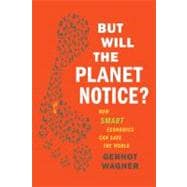
“Wagner’s wry, witty prose brings rationality to an emotionally charged subject and urges us to take personal responsibility for the planet by demanding an economically sound solution to guiding market forces in the right direction, making it in our best interests to do the right thing.” —Publishers Weekly
“If you want to understand how an economist thinks about the biggest challenge our planet has ever stumbled up against, this book is an awfully good place to start!” —Bill McKibben, author of Eaarth: Making a Life on a Tough New Planet
The New copy of this book will include any supplemental materials advertised. Please check the title of the book to determine if it should include any access cards, study guides, lab manuals, CDs, etc.
The Used, Rental and eBook copies of this book are not guaranteed to include any supplemental materials. Typically, only the book itself is included. This is true even if the title states it includes any access cards, study guides, lab manuals, CDs, etc.